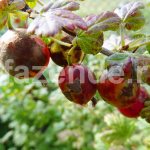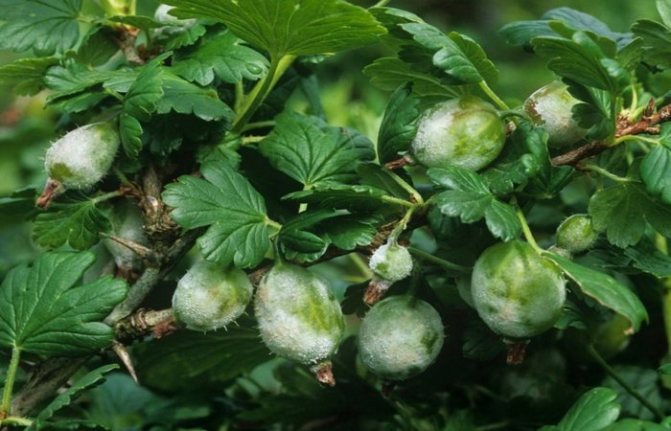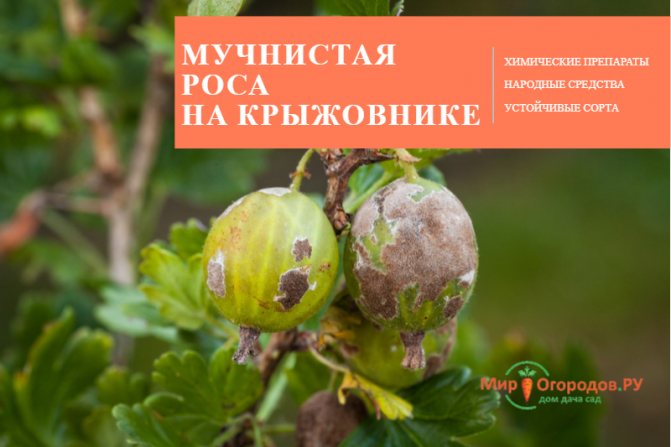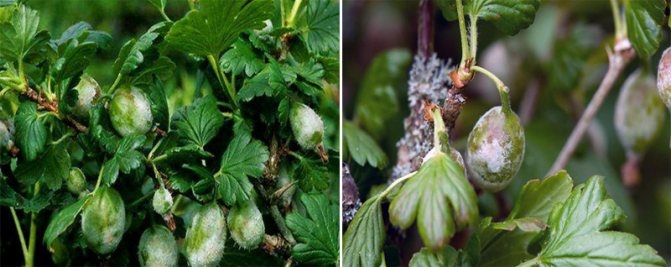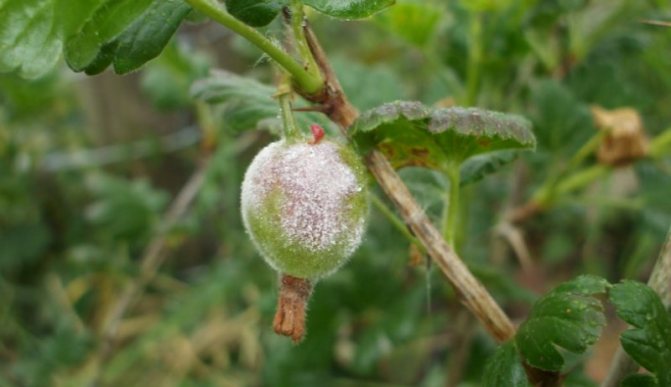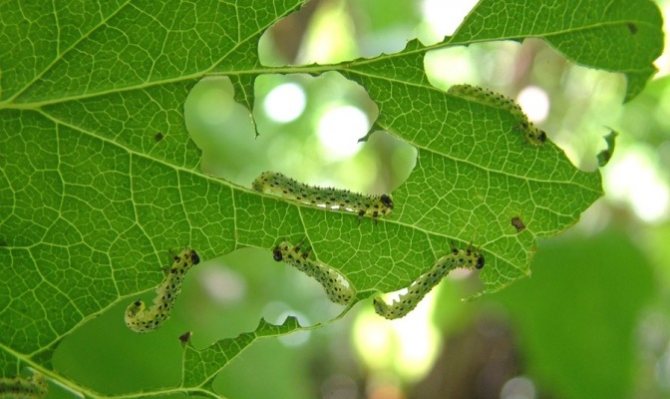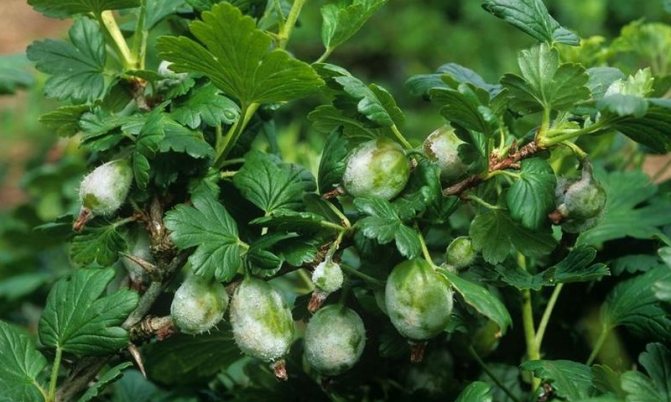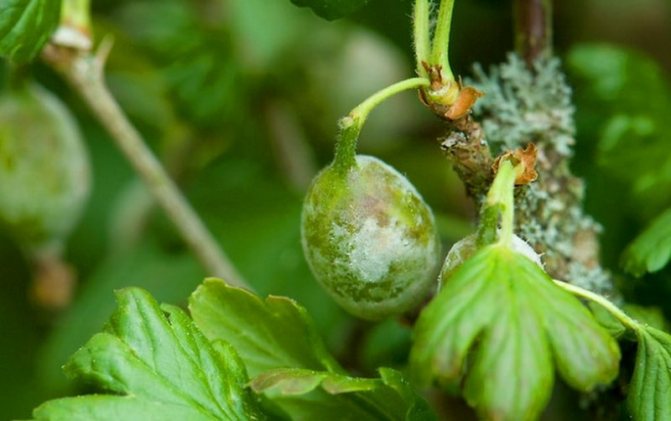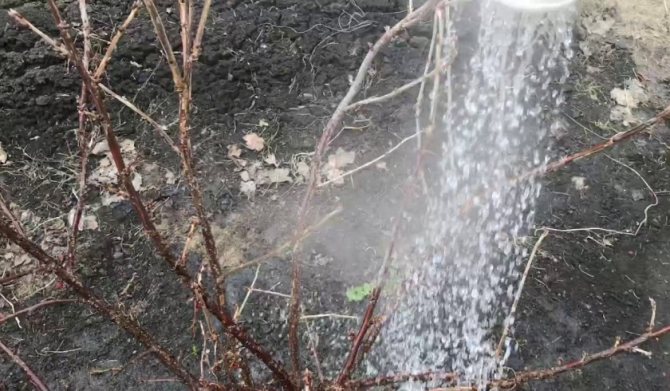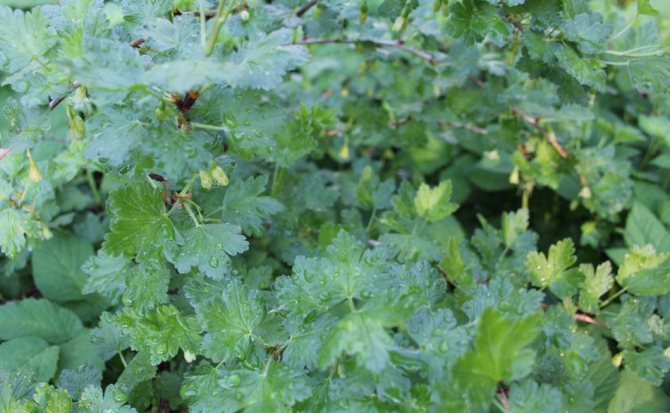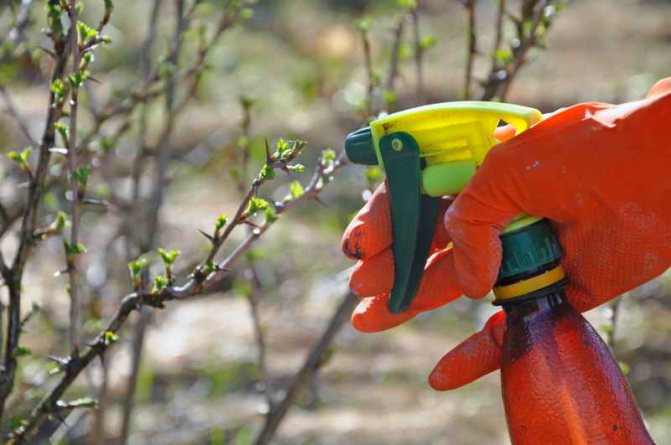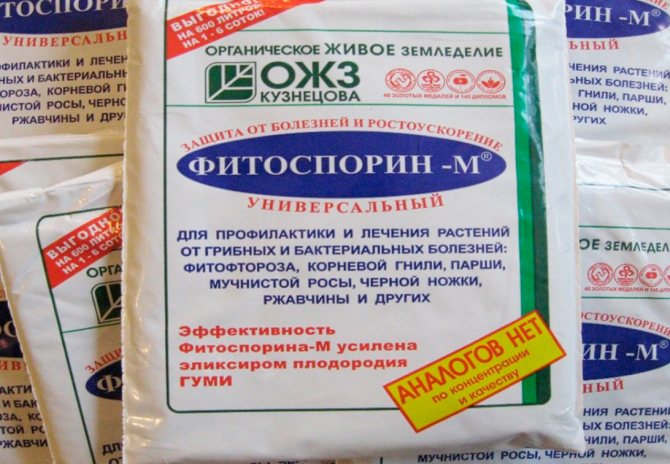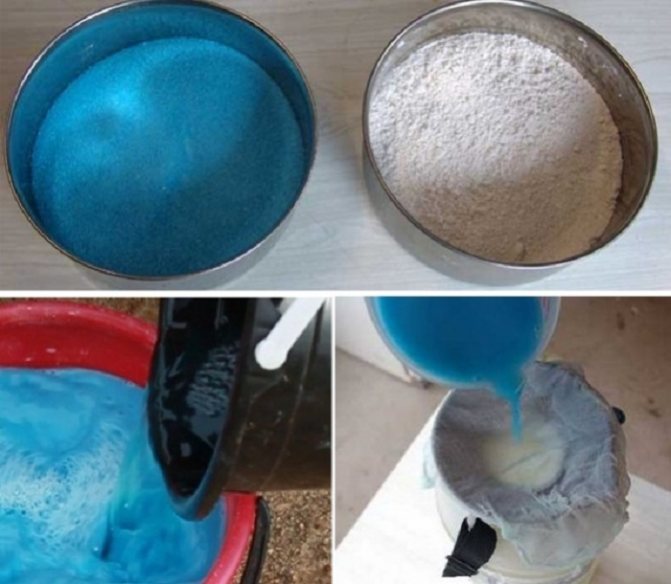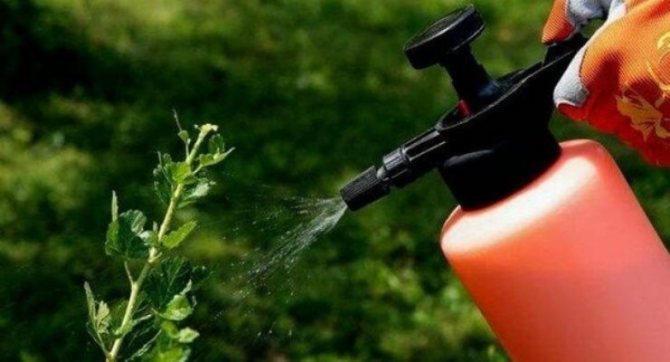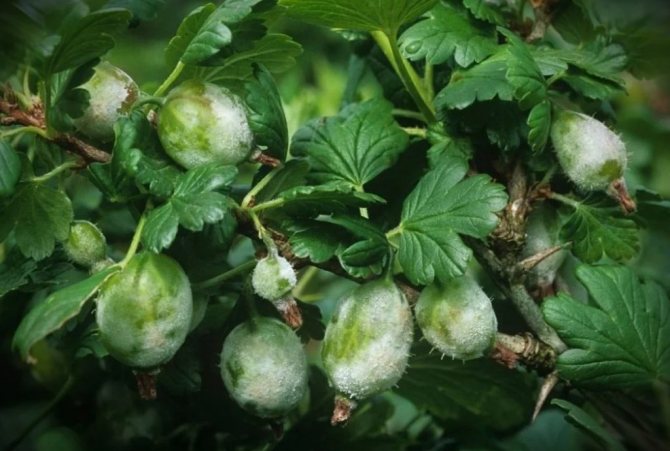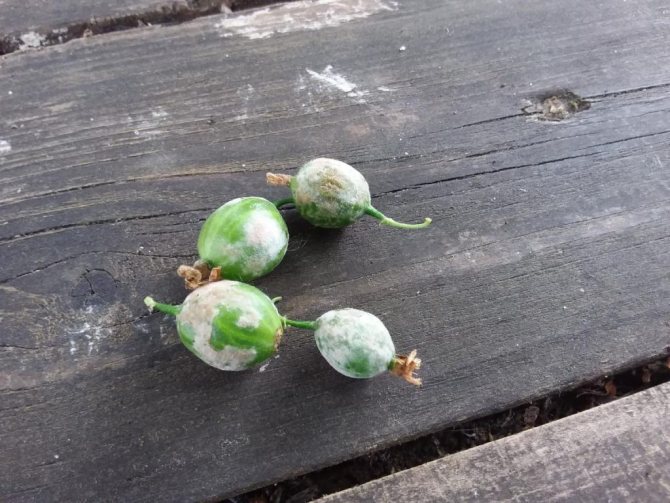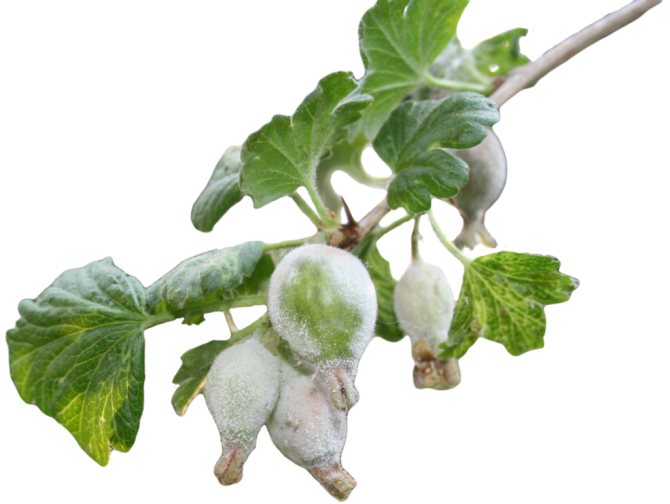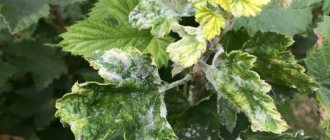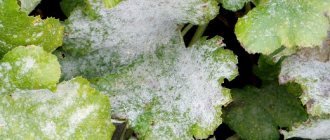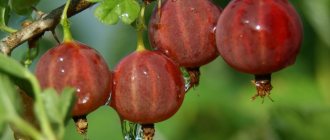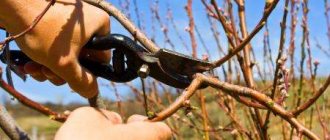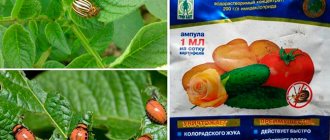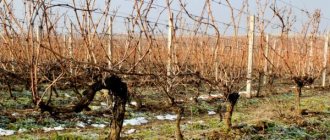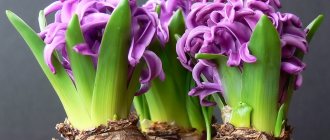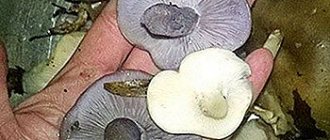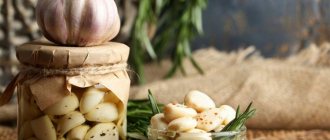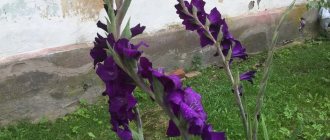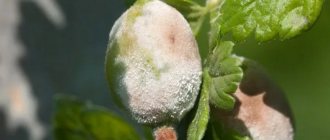Have you noticed a white bloom on the gooseberries in your garden? This is a fungal disease of powdery mildew. It can affect all parts of the plant: foliage, shoots, fruits. Later, the plaque begins to darken, the berries do not grow and dry, the leaves shrink and, drying out, fall off. If the plant is not treated, it can die in a couple of years.
When 1 bush has become infected, there is a danger that the disease will spread to neighboring ones, because spores are well blown by the wind, in addition, they are not afraid of frost, heat, they like high humidity.
Throughout the season, you need to be ready to fight the harmful fungus, especially during the period of heavy rains.
There are several ways to get rid of this defeat.
Powdery mildew on gooseberries. Illustration for this article is used under a standard license <328
How to identify powdery mildew on gooseberries
At the first (conidial) stage of the disease, the shrub is affected by fungal spores, this manifests itself in the form of a white volatile plaque that can be easily removed. The mycelium is the main spread of the disease on gooseberries.
In spring, ascospores appear on the berries, which throw spores far beyond the bush, affecting other plants.
In summer, the disease enters the marsupial stage, the plaque spreads, it is brown with a hard crust. In autumn and winter, the fungus lives on the affected buds and shoots. He prefers to settle only on young shrub tissues - ovaries, new leaves, branches and fruits.
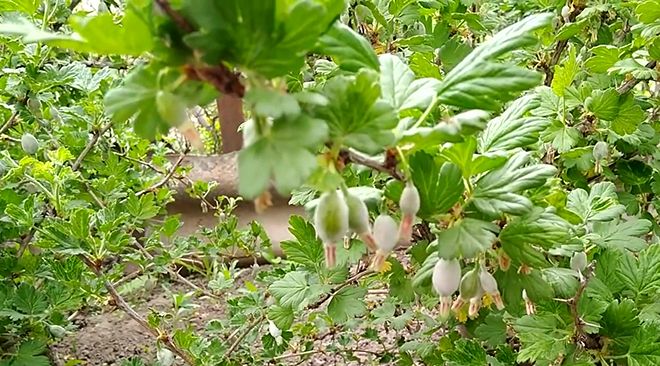
Symptoms of the disease can be seen 2-3 weeks after the culture is infected. If the spores hit the shrub in the fall, the first symptoms will appear on the young leaves. But most often the disease affects the culture in late May - early June.
In addition to plaque, this fungus can be identified by other signs:
- leaves are deformed, curled and fall off;
- ovaries crumble;
- fruits wrinkle and dark brown spots appear;
- shoots are bent;
- the growth and development of the shrub stops, and after a few years it dies.
Description of the disease and how to deal with it
You can understand the presence of powdery mildew on gooseberry berries if a loose, cobweb, loose white bloom has formed there. It will turn into brown spots over time. If you do not start treatment, then, in addition to the fruits, the disease will begin to affect shoots and leaves, which eventually turn yellow and curl.
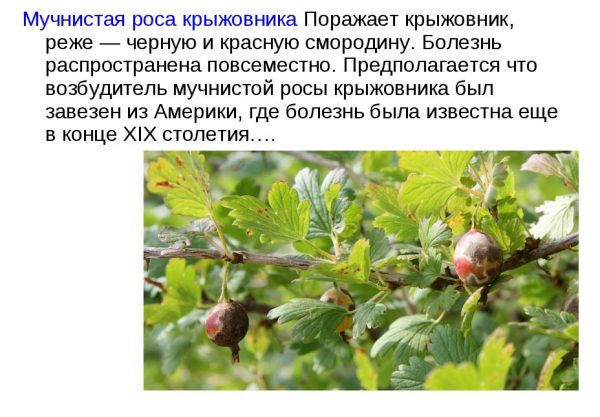

Cracks form on the fruits, and they begin to crumble, and they are not yet ripe. In this case, it is necessary to carry out medical measures as soon as possible. Otherwise, powdery mildew will ruin the bush, and it will no longer bear fruit, and then it will completely disappear. And here is how the leaving in the spring happens, follow the link.
On the video - powdery mildew on gooseberries:
Folk recommendations for powdery mildew
Some gardeners do not use chemicals to fight various infectious diseases, including fungal ones, because consider them dangerous for future fruits, and use only folk methods of struggle.
How to get rid of the fungus with folk remedies:
- 1 tbsp. l. soda, 1 tab. Aspirin, 1 tsp. Dissolve shampoo and 15 ml of vegetable oil in 4-5 liters of water. Irrigate the bushes throughout the season once every 2 weeks.
- Dilute 150 ml of Gaupsin or Trichodermin with 10 liters of water and irrigate the culture during the entire vegetative period with an interval of 14-15 days.
- Dilute 50 g of baking soda and 10 ml of shampoo with warm water and pour the composition into a bucket of water. Irrigate the culture before and after the emergence of ovaries.
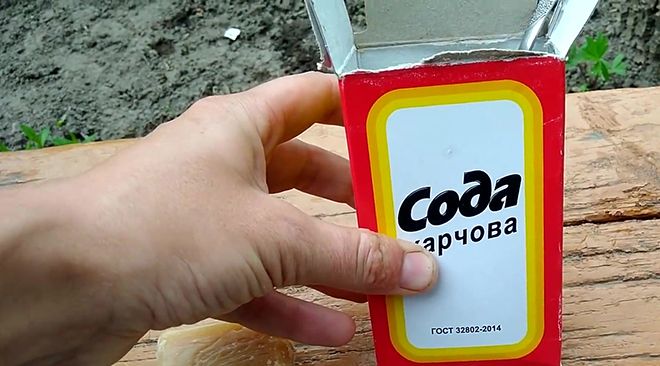

- Add 8-10 kg of dry or fresh horsetail to a bucket of cold water and boil for 2-3 hours. Cool, squeeze out and add another 50 liters of water. Water the bushes abundantly every 7 days from the beginning of spring until the first frost.
- Pour 1 liter of kefir or sour milk into a bucket of cold water. Process plants every 72 hours.
- Pour 200-300 g of onion husks into a bucket of cold boiled water and leave for 2 days. Use before buds appear until leaves fall.
- Add about 10 drops of iodine to a bucket of cold boiled water. Process shrubs 2 times (break 72 hours). Because iodine is an antiseptic, it kills fungal spores.
- Dissolve 1 liter of wood ash in 10 liters of water and add 30 g of detergent. Leave for 24 hours and then irrigate the plant 2 times with an interval of 10 days from the sprayer.
- Chop half a bucket of garlic arrows and pour 4-5 liters of water. Leave for 24 hours and then thoroughly irrigate the bushes on all sides.
- 2 tbsp. l. dilute dry mustard with 8 liters of boiling water and cool. At the initial stage of the disease, it is enough to process the shrubs 1 time.
- Dilute 1 kg of mullein with 2-3 liters of water and leave for 4 days. Add 10 liters of liquid and irrigate crops thoroughly before budding and during leaf fall. It is best to carry out the procedure with a broom, which will allow you to apply the composition not only to the surface of the sheets, but also to their lower part.
- Pour 50 g of saltpeter into a bucket of cold boiled water, stir and process the bushes after the inflorescences wither.
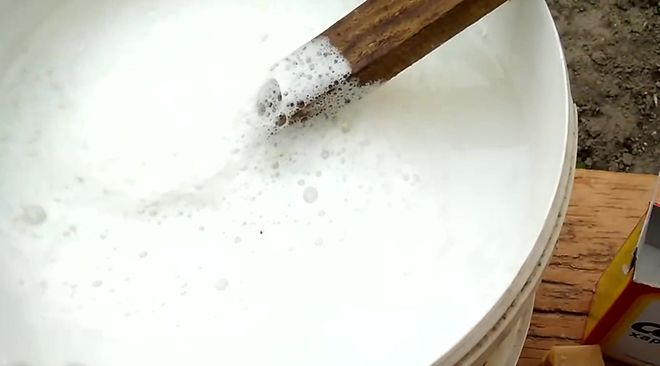

- Pour 1000 ml of serum into a bucket of water and irrigate the plants 3 times with a break of 72 hours.
- Pour 30 g of dry tansy in a bucket of hot water (temperature + 90˚C) and leave for 24 hours. Then boil for 2-3 hours, cool and squeeze the cake. Water the soil abundantly near the bushes in spring and autumn.
- Take 30 g of urea, 50 g of potassium chloride, 20 g of fertilizer with phosphorus and 5 g of potassium permanganate and add them to a bucket of cold boiled water. Stir well and process the shrubs after the inflorescences wilt.
- Pour boiling water over the gooseberries until the buds appear.
- Pour 1/3 of a bucket of stale milled hay with 4-5 liters of water and leave for 72 hours. Strain and add another 12-15 liters of liquid. Irrigate gooseberry bushes regularly before flowering and before leaves fall.
Preventive actions
The first rule of happy gardening concerns plant spacing.
- Do not thicken the planting.
- Only break up the berries in full sun.
- Remember to thin out the bushes annually.
In early spring, it is necessary to spill all gooseberry branches with boiling water in order to destroy sleeping pests and diseases.
Pruning
And also carry out sanitary pruning, remove diseased and old branches, give expanse to growing shoots.
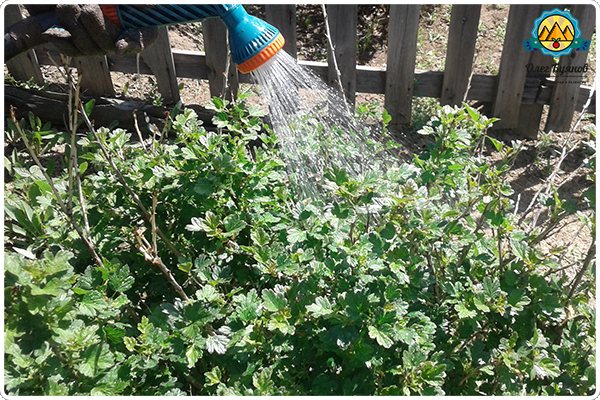

Spring digging
Processing the berries is not necessary if you clean up plant residues from under the bush in time and scrupulously dig up the soil to a depth of at least 15 cm in the fall, because the spores of the fungus will die after such a procedure.
Spraying chemicals
If the disease is in an advanced stage, alternative methods may become ineffective. In this case, chemicals will come to the rescue, which, even after one treatment, can cope with the problem and preserve all the gooseberry bushes.
How to fight fungus with chemicals:
- Dissolve 75 g of grated alkaline soap in 5 liters of warm water and gradually add 20 g of copper sulfate. The solution should be light blue and homogeneous. All shrubs should be processed before the beginning of the flowering season or after fruit sets.
- Dilute the Topaz preparation in accordance with the instructions in the instructions and carefully process the culture after the first flowers appear.
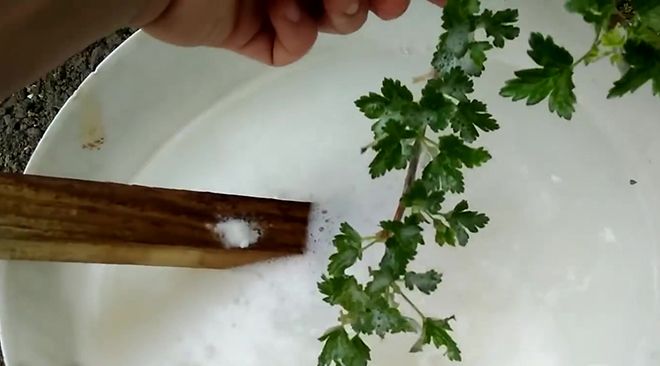

- Dissolve 40 g of the preparation "HOMa" in 10 liters of water and irrigate the gooseberry once during its flowering period.
- Dilute 100-150 ml of "Fitosporin" with 8-10 liters of water and water abundantly around the shrub before flowering and immediately after harvesting.
Precautions
Treatment of plants with topaz, colloidal sulfur or other fungicides should be carried out in protective equipment. Also, it is advisable to use a respirator or gauze bandage. If drugs come into contact with the skin or eyes, in order to avoid burns, rinse these areas with plenty of water.
It is recommended not to use any one drug, but to alternate them. So you will be able to avoid the addiction of the mycelium to any one substance. Also, you can choose the most effective and convenient options for influencing powdery mildew.
The fight against powdery mildew should be carried out in a timely manner and fully, in several stages. In this case, it is possible to avoid the appearance of the disease, as well as completely get rid of the manifestations of the disease.
Powdery mildew is the most dangerous disease. The fungus Sphaerotheca mors-uvae develops rapidly on gooseberries and spreads to neighboring plants such as currants. If you do not take action, the shrubs will die. It is important to identify the disease in time and start the fight. There are many ways to prevent and treat a lesion.
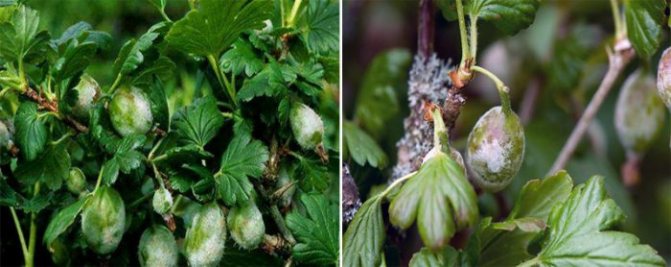

Powdery Mildew Resistant Gooseberry Varieties
Breeders were able to develop various varieties of gooseberries that are most resistant to powdery mildew. These are crops that are not afraid of fungal infections, so they can be planted in any garden plot.
Gooseberry species that are not susceptible to fungal infection:
- "Kolobok". It is a high-yielding red gooseberry that requires little or no maintenance.
- "Finnish". It is a frost-hardy, moisture-loving and undemanding crop variety that can be planted in well-lit areas of land with acidic soil.
- "Anniversary". It is a tall shrub with yellow and sweet fruits, not afraid of powdery mildew.
- Kuibyshevsky. It is a medium-sized dense gooseberry with large and sweet fruits weighing from 3.6 to 8 g.
- "Ural grapes" is an early ripe variety with dark green fruits and juicy pulp.
- "Houghton" produces small, densely planted on the branches of maroon fruit.
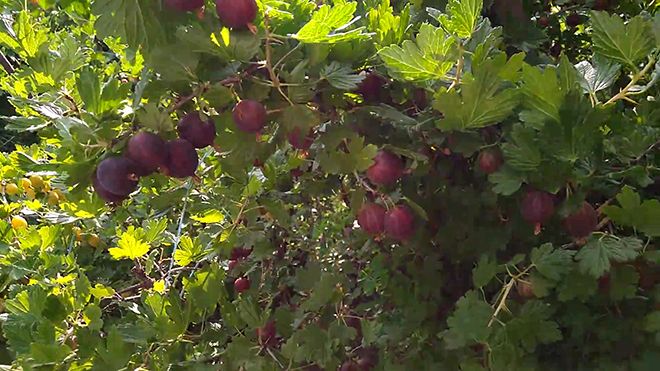

- "Senator" is a frost and drought tolerant crop with dark red fruits. When fully ripe, they turn almost black.
- "African" is a short shrub (from 1 to 1.2 m) that can bear fruit one year after planting.
- "Harlequin" is a high-yielding and frost-resistant variety, from which berries can be used for various types of conservation.
Depending on the degree of resistance to fungi, you can choose gooseberry varieties that, with proper care and prevention of fungal infections, may not be affected by this disease. Photos of crop varieties resistant to various fungal infections can be seen on sites created specifically for amateur gardeners.
Disease prevention
There are several preventive measures to prevent the appearance and spread of powdery mildew.
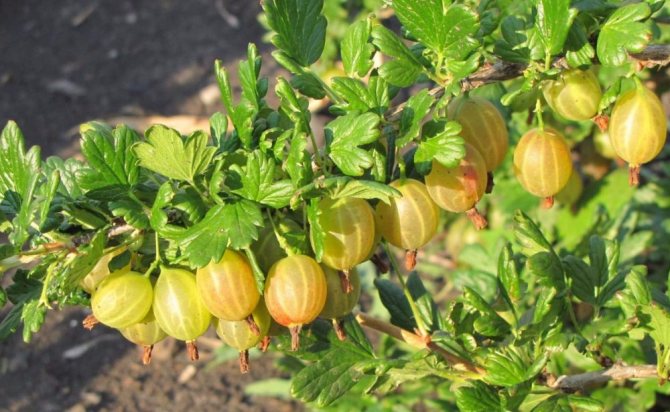

Prevention consists of the following actions:
- Keeping the plantings clean. Weeds are removed as soon as they begin to appear, thinning the shoots in time.
- During the formation of the berry, only varietal, zoned young plants are acquired. The place of purchase of planting material should be a certified nursery or garden center.
- Bush pruning is carried out regularly. It is not enough to cure the plant, it is necessary to remove the trimmed parts of the plant from the site and burn outside the territory.
- Another measure is cleaning the area ahead of the winter season. The soil near the trunk space is carefully weeded, and a mulching layer is laid near the bush.
- You cannot "overfeed" with nitrogen fertilizers. They only stimulate the active growth of greenery and reduce the immunity of the bush. Potash and phosphorus supplements will help to strengthen the resistance.Iodine also reduces susceptibility.
- Insect pests are dealt with in a timely manner. They are active carriers of spore infections.
Find out what to do if all the leaves of the gooseberry are eaten.
You can forget about powdery mildew if you grow fungus-resistant gooseberry varieties:
- Harlequin;
- African;
- Beryl;
- Grace;
- Grossular;
- Jocelyn;
- Carpathians;
- Kolobok (popular folk variety);
- Commander;
- Lada;
- Pearl;
- Spring;
- Pink;
- Russian;
- Sadko;
- Firework;
- Sirius;
- Houghton;
- Anniversary.
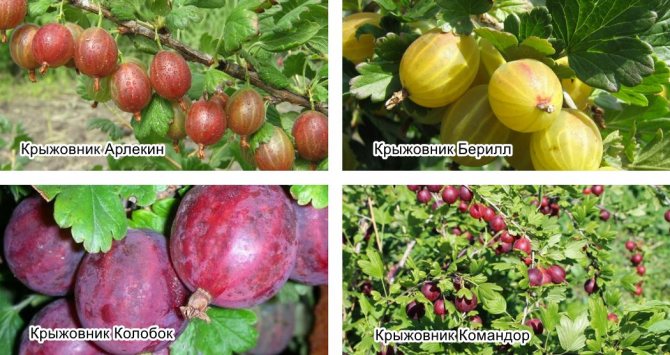

There are many methods of protecting gooseberries from the insidious fungus. Most of them have been proving their effectiveness for more than one year. It remains to choose a more suitable method and enjoy a delicious, rich harvest.

